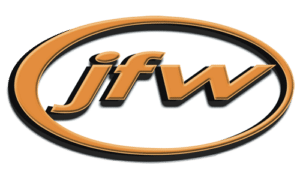Frequently Asked Questions (FAQ) for RF Switches
Common RF Switch Terminology:
Absorptive: Ports that are turned off are internally terminated with the proper impedance. (i.e. 50 Ohm impedance models are internally terminated with 50 Ohms.)
Self-terminating: This term is used interchangeably with “absorptive”. Ports that are turned off are internally terminated with the proper impedance. (i.e. 50 Ohm impedance models are internally terminated with 50 Ohms.
Reflective: Unused ports are set to a high impedance state (i.e. open).
Normally Open: With no power applied, the common port is not connected to any of the output ports.
N.O. Common abbreviation for Normally Open.
Failsafe: With no power applied, the common port is connected to one of the output ports.
Hot Switching: The switch changes state while a RF signal is still being applied to the switch.
Cold Switching: No RF signal is applied to the RF switch while the RF switch is changes states.
Switching Speed: Port turning ON = 50% TTL control to 90% of the RF signal. Port turning OFF = 50% TTL control to 10% of the RF signal.
Rise Time: Port turning ON = 10% of the RF signal to 90% of the RF signal.
Fall Time: Port turning OFF = 90% of the RF signal to 10% of the RF signal.
FAQs for RF Switches:
1) What does the terminology “reflective”, “absorptive”, “self-terminating” mean?
- Reflective switch: Switch ports are high impedance (open) when turned off.
- Absorptive switch: Switch ports are 50 Ohm when turned off.
- Self-terminating switch: Switch ports are 50 Ohm when turned off.
2) What does the terminology “N.O.” and “failsafe” mean?
- Normally Open (N.O.) switch: With no power applied, common port is connected to none of the output ports.
- Failsafe switch: With no power applied, common port is connected to one of the output ports.
3) What does the terminology “cold switch” and “hot switch” mean?
- Cold switch: No signal is applied to the switch while the switch is changing states.
- Hot switch: The switch changes states while a signal is still being applied to the switch.
4) What are the pros and cons of solid-state versus relay RF switches?
[one_half]
Solid-State Pros
- Typical MTBF = 250,000 hours
- Excellent insertion loss repeatability
- Switching speed (microseconds)
Solid-State Cons
- Increased harmonic distortion
- Lower input power *
[/one_half]
[one_half_last]
Relay Pros
- Wide frequency range (works at DC)
- Higher input power
- Low harmonic distortion
Relay Cons
- Switching speed (milliseconds)
- Lifetime (1 million operation typical)
[/one_half_last]
*Solid-state switches will typically handle much less power than relay models. However, JFW has a line of high power solid-state switches that can hot switch up to 100 Watts and cold switch up to 250 Watts, depending on the model.
5) Are the RF switches attenuators bi-directional?
All of JFW’s RF switches are bi-directional unless noted differently on the specification sheet.
6) I need a custom RF switch designed. How much are your typical NREs (non-recurring engineering charge)?
JFW does not charge NREs. Please send your custom requirement to sales@jfwindustries.com.
7) Are your 18GHz Electro-mechanical Switches available with indicators or as latching?
- Typical options: Latching, Self-terminating, Indicators, TTL, RoHS, non-RoHS
- Typical DC supply options: +12, +15, or +28 Vdc
